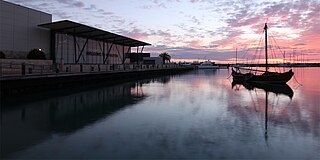
Geraldton is a coastal city in the Mid West region of Western Australia, 424 kilometres (263 mi) north of the state capital, Perth.
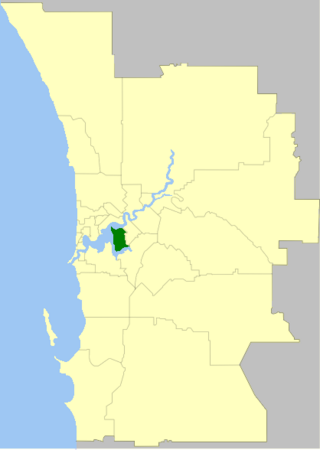
The City of South Perth is a local government area in the inner southern suburbs of the Western Australian capital city of Perth about 4 kilometres (2.5 mi) south of Perth's central business district. The City covers an area of 19.9 square kilometres (7.7 sq mi), maintains 203 kilometres (126 mi) of roads and a little over 4.3 km2 of parks and gardens, and had a population of about 42,000 at the 2016 Census. The City is the entirety of the state electoral district of South Perth. An area of Kensington joined into South Perth after the 2013 redistribution, although dwindling population growth in Victoria Park may mean that part of the City will move back.

New Norcia is a town in Western Australia, 132 km (82 mi) north of Perth, near the Great Northern Highway. It is situated next to the banks of the Moore River, in the Shire of Victoria Plains. New Norcia is the only monastic town in Australia, with its Benedictine abbey founded in 1848. The monks later founded a mission and schools for Aboriginal children. A series of Catholic colleges were created, with the school that became St Benedict's College in 1965 later gaining notoriety for being the site of sexual abuse that took place in the late 1960s and 1970s.

Waterford is a small riverside suburb of Perth, the state capital of Western Australia. Its local government area is the City of South Perth.

The Congregation of Christian Brothers is a worldwide religious community within the Catholic Church, founded by Edmund Rice.
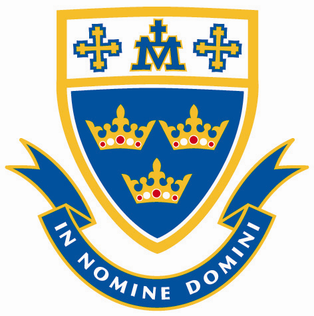
Trinity College is an independent day school for boys, located on the Swan River foreshore in East Perth, Western Australia. The school was established in 1962 when students from the city schools CBC Perth and St Patrick's Boys School moved to the new Trinity College campus.

Aquinas College, locally abbreviated as Aquinas, is an independent Roman Catholic single-sex primary and secondary day and boarding school for boys, located at Salter Point, a suburb of Perth, Western Australia.
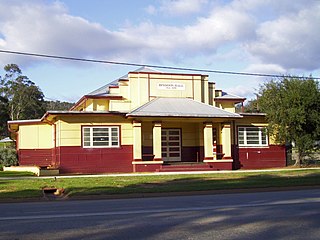
Bindoon is a town 84 kilometres (52 mi) from Perth city on the Great Northern Highway within the Shire of Chittering. The name Bindoon is thought to be Aboriginal in origin and to mean "place where the yams grow". The name has been in use in the area since 1843 when an early settler, William Brockman, named the property he had surveyed as Bindoon. The townsite was gazetted in 1953.
The Clontarf Foundation is a not-for-profit organisation that assists in the education and employment of young Aboriginal and Torres Strait Islander men.
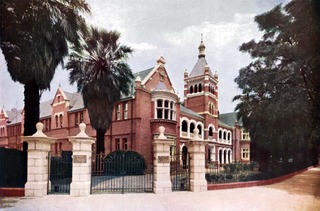
Christian Brothers College (CBC), informally known as CBC Perth or The Terrace was an Independent school for boys situated on St Georges Terrace in the centre of Perth, Western Australia. The college opened in January 1894, and the college was a founding member of the Public Schools Association in 1905. The college was the second high school (1894) and the second boarding school (1896) in Western Australia. In 1938 boarders and some day students at CBC moved to the new Aquinas College campus at Salter Point. Brother C.P. Foley, who was the headmaster of CBC Perth and who at the same was the first headmaster of Aquinas took with him the Christian Brothers College crest and colours, honour boards, and Public Schools Association membership. Brother Foley insisted the heritage of CBC Perth from 1894–1937 belonged to Aquinas. To further enhance Aquinas as the premier the Christian Brothers College, the main building at Aquinas was designed in the Federation Arts and Crafts architecture of CBC Perth. Meanwhile, although most of the day students remained at CBC Perth, numbers were depleted and the college immediately accepted an overflow of students from St Patrick's Boys School on Wellington Street. CBC Perth continued as a day school from 1938–1961. In 1962, the students and staff of CBC Perth moved to a new site on the East Perth foreshore and the college was renamed Trinity College.
Brother Paul Francis Keaney, MBE, ISO was an Irish-born Australian Catholic educator. He was accused of abusing the children under his care.
Tardun is a small town in the Mid West region of Western Australia.
The sexual abuse scandal in the Congregation of Christian Brothers is a major chapter in the series of Catholic sex abuse cases in various Western jurisdictions.

The Mount Cashel Orphanage, known locally as the Mount Cashel Boys' Home, was a boys' orphanage located in St. John's, Newfoundland and Labrador, Canada. The orphanage was operated by the Congregation of Christian Brothers, and became infamous for a sexual abuse scandal and cover-up by the Royal Newfoundland Constabulary and NL justice officials.
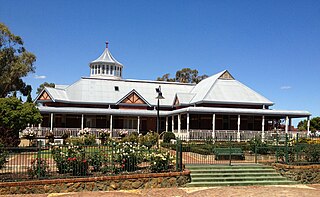
Castledare Boys' Home was a residential college in Wilson, Western Australia owned and operated by the Congregation of Christian Brothers from March 1929 to 1983 and established for the treatment and training of intellectually handicapped children. A 1929 newspaper article announcing the opening described it as a "training school for sub-normal boys". It opened with ten boys and under the directorship of Brother G. Hyland. The state psychologist, Ethel Stoneham, travelled to Europe and the United States to study similar institutions and was influential in the design of the home.
Cavanagh and Cavanagh was an architectural partnership in Australia, active in both Western Australia and Queensland. The partners were brothers Michael Cavanagh and James Cavanagh.
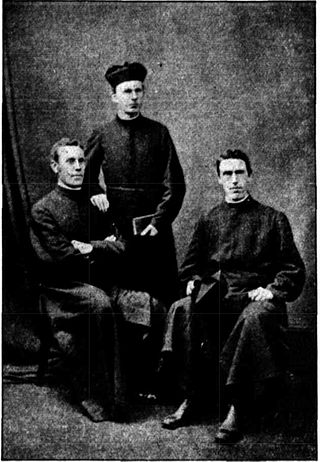
Dominic Fursey Bodkin was a Christian Brother and a Catholic educator in Australia.














